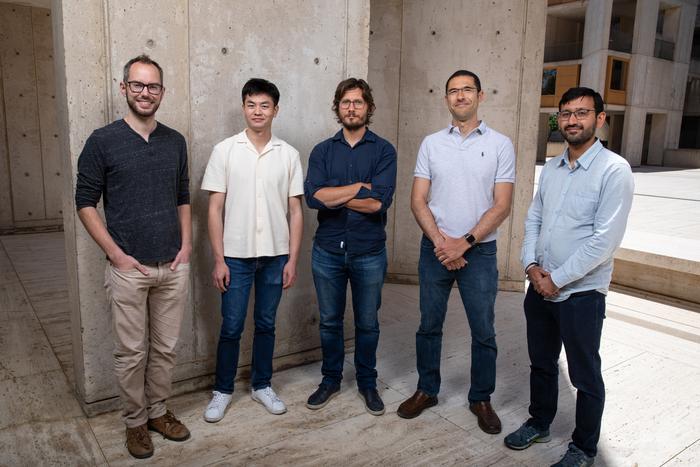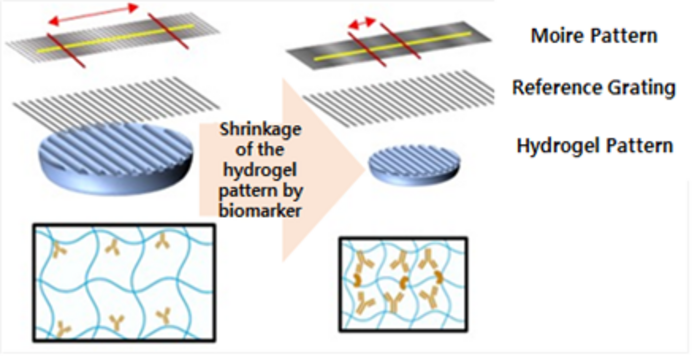LA JOLLA (July 21, 2023)—Salk Institute researchers, in collaboration with the National Institutes of Health, have discovered the molecular mechanisms by which the human immunodeficiency virus (HIV) becomes resistant to Dolutegravir, one of the most effective, clinically used antiviral drugs for treating HIV.

Credit: Salk Institute
LA JOLLA (July 21, 2023)—Salk Institute researchers, in collaboration with the National Institutes of Health, have discovered the molecular mechanisms by which the human immunodeficiency virus (HIV) becomes resistant to Dolutegravir, one of the most effective, clinically used antiviral drugs for treating HIV.
The new study, published July 21, 2023 in Science Advances, reveals how changes to the 3D structures of integrase, an HIV protein, can lead to Dolutegravir resistance and how other compounds may be able to overcome this resistance.
“With HIV, one must think two steps ahead of the virus,” says Salk Associate Professor Dmitry Lyumkis, co-senior author and the Hearst Foundation Developmental Chair. “We’ve now determined how the virus could continue evolving against drugs like Dolutegravir, which is important to consider for the development of future therapeutics.”
HIV infection depends on the ability of the virus to paste its own genetic material into the genomes of human cells, essentially hijacking the cells to become virus-producing factories. Dolutegravir and related drugs work by blocking integrase, a protein critical to the ability of the virus to integrate its own DNA into the host genome. Without functioning integrase, HIV can’t effectively infect human cells. However, HIV is a rapidly mutating virus, and an increasing number of HIV strains are resistant to Dolutegravir.
In the past, Lyumkis’ lab discovered the 3D structure of the integrase protein while attached to DNA as well as exactly how drugs like Dolutegravir bind to and block integrase. But researchers weren’t sure how the integrase structure changed when the virus stopped responding to Dolutegravir.
In the new study, Lyumkis and collaborators from the National Institutes of Health created versions of the integrase protein with mutations known to make HIV resistant to Dolutegravir. Then they determined the structure of each mutant integrase, revealing why Dolutegravir could no longer bind to and block each version of the protein. The scientists also evaluated the “fitness” of the virus (its capacity to produce infectious descendants) and the activity of the enzyme to better understand what leads to drug resistance in patients.
“We were quite surprised by the magnitude of resistance that these integrase variants had,” says Lyumkis. “The ability of Dolutegravir to function was completely compromised.”
The researchers also tested the efficacy of an experimental HIV drug, 4d, to block the function of Dolutegravir-resistant integrase proteins. 4d was developed by Lyumkis’ collaborators at the NIH as a next-generation integrase-targeting drug and is currently in pre-clinical animal trials. In all the variants, they discovered that 4d still potently blocked the ability of HIV to integrate its genes into human cells. This suggests that 4d or variants of this compound may be effectively used to treat the virus in patients who have developed resistance to Dolutegravir.
The structural data on how 4d binds to the Dolutegravir-resistant integrase proteins also hinted at how new drugs could overcome drug resistance.
“4d is really just an example of how to combat drug resistance, but it provides us with some basic principles that we can learn from to design other therapeutics,” says co-senior author Robert Craigie of the National Institute of Diabetes and Digestive and Kidney Diseases (NIDDK), part of the National Institutes of Health. “The way a section of the 4d molecule stacks like a flat sheet on top of a section of the integrase protein-DNA assembly could be replicated in other compounds.”
Next, the scientists will study how integrase variants evolve—including those not yet seen in patients but possible in the future—and how they impact response to the best clinically used drugs as well as the ability of HIV to infect humans.
Other authors include Dario Oliveira Passos, Zelin Shan, Avik Biswas and Timothy S. Strutzenberg of Salk; Min Li, Zhaoyang Li, Steven J. Smith, Xue Zhi Zhao, Terrence R. Burke, Jr. and Stephen H. Hughes of the National Institutes of Health; Qinfang Sun, Indrani Choudhuri, Allan Haldane, and Ronald M. Levy of Temple University; Nanjie Deng of Pace University; and Lorenzo Briganti and Mamuka Kvaratskhelia of University of Colorado Anschutz Medical Campus.
The work was supported by the National Institutes of Health (U01 AI136680, R01 AI146017, U54 AI170855, R35 GM132090), the NIDDK Intramural Program, the Margaret T. Morris Foundation, the Hearst Foundation, the NIH Intramural Program, the Center for Cancer Research, the National Cancer Institute, the NIH AIDS Intramural Targeted Program, and an F32 Postdoctoral Fellowship (GM148049).
The content in this release is the sole responsibility of the authors and does not represent the official views or imply enforesment of the National Institutes of Health.
Journal
Science Advances
DOI
10.1126/sciadv.adg5953
Article Title
Mechanisms of HIV-1 Integrase Resistance to Dolutegravir and Potent Inhibition of Drug Resistant Variants
Article Publication Date
21-Jul-2023





